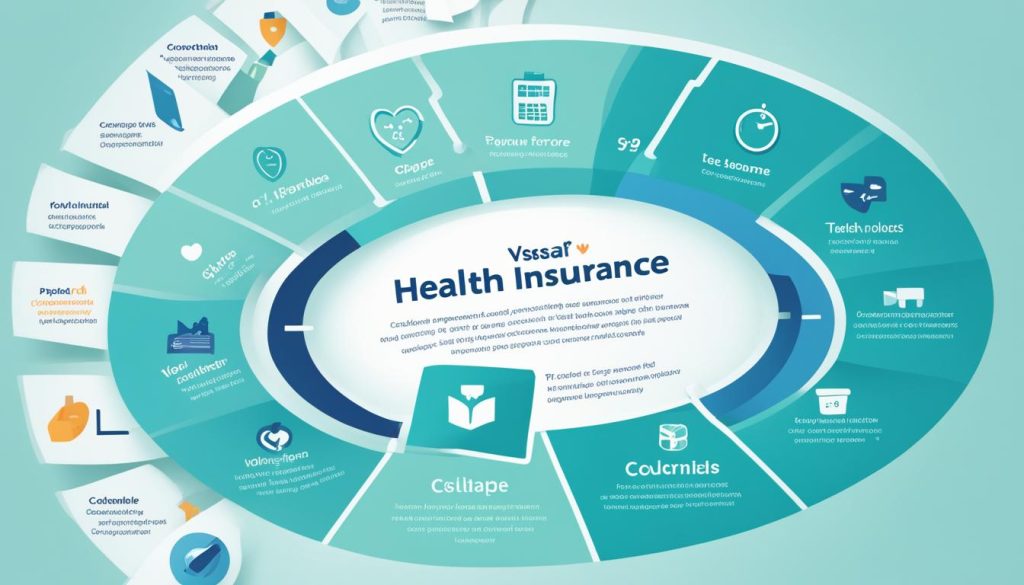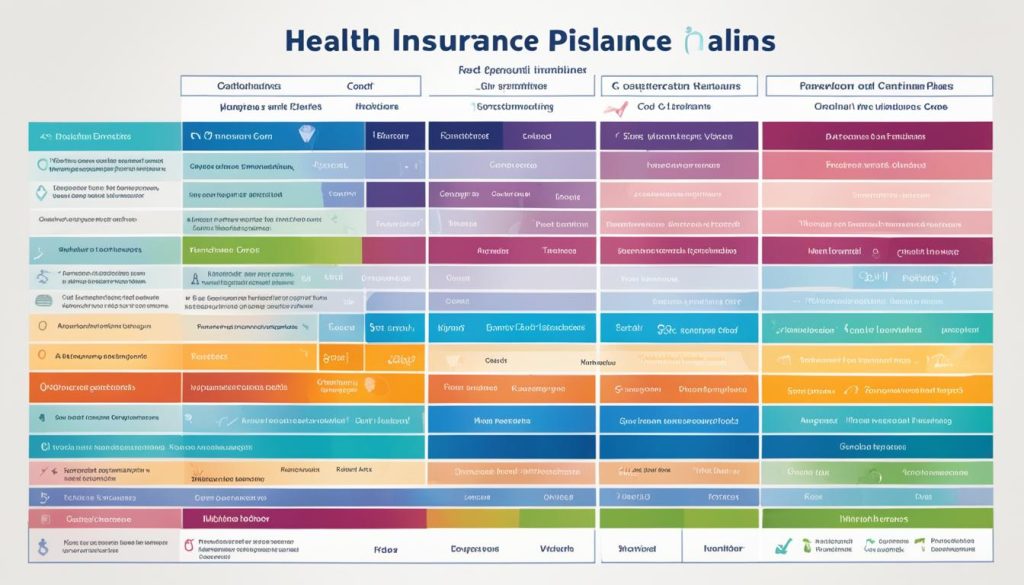Navigating the complex world of health insurance can be a daunting task, but it’s crucial to find a plan that covers all your medical needs, from routine check-ups to major procedures. Whether you’re exploring health insurance options, seeking affordable coverage, or simply trying to understand the different insurance plans and medical benefits available, we’re here to guide you through the process.
One of the key factors to consider when selecting a health insurance plan is understanding your coverage. This includes knowing what services are covered, how much you’ll pay in premium costs, and how to find in-network providers. The deductibles, copays, and even health savings accounts (HSAs) can have a significant impact on your overall healthcare costs, so it’s essential to thoroughly review these details.
Moreover, the Affordable Care Act has introduced important patient protections, such as the inability for insurers to refuse coverage based on pre-existing conditions. This means that you can access affordable healthcare and find medical coverage plans that cater to your unique needs, regardless of your health history.
Key Takeaways
- Understand the different health insurance options, including employer-sponsored plans, individual policies, and government-sponsored programs like Medicare and Medicaid.
- Evaluate your current and anticipated medical needs to ensure your chosen plan provides the necessary coverage.
- Consider the costs associated with each plan, including premiums, deductibles, and out-of-pocket expenses.
- Explore health savings accounts (HSAs) and flexible spending accounts (FSAs) to help manage your healthcare costs.
- Familiarize yourself with your rights and protections under the Affordable Care Act, such as the coverage of pre-existing conditions.
Understanding the Importance of Health Insurance Coverage
Having comprehensive health insurance coverage is crucial to addressing your medical needs, both current and anticipated. Health insurance provides a safety net that can shield you from the financial burden of unexpected illnesses, chronic conditions, and expensive treatments. By investing in a plan that offers robust coverage, you can ensure that your health and well-being are protected, allowing you to focus on your recovery and managing your health concerns without the added stress of significant out-of-pocket expenses.
Why Comprehensive Coverage Matters
Comprehensive health insurance plans cover a wide range of essential health benefits, including doctor visits, hospital stays, prescription drugs, and preventive care. These plans are designed to provide you with the coverage you need to maintain your overall health and well-being. Without such comprehensive coverage, you may find yourself underinsured, facing the risk of high out-of-pocket costs for medical treatments and procedures that can quickly deplete your savings and financial resources.
The Consequences of Being Underinsured
Being underinsured, or having a health insurance plan that does not provide adequate coverage for your medical needs, can have serious consequences. If you require extensive medical care for a chronic illness or unexpected health condition, the out-of-pocket costs can quickly add up, potentially leading to financial hardship or even bankruptcy. Underinsured individuals may also delay or forgo necessary medical care due to the fear of high expenses, which can ultimately worsen their health outcomes and quality of life.
Assessing Your Medical Needs
When it comes to choosing the right health insurance plan, it’s crucial to carefully evaluate your current and anticipated health conditions. This assessment will help you determine the level of medical needs assessment and specialist care you may require, as well as the importance of chronic illness management coverage.
Evaluating Your Current and Anticipated Health Conditions
Take the time to reflect on your current health conditions and any anticipated health conditions you may face in the future. Consider any ongoing medical treatments, regular check-ups, or potential health concerns that may arise. This comprehensive understanding will guide you in selecting a plan that provides the necessary coverage and support to address your unique healthcare needs.
Considering Specialist Care and Chronic Illness Management
If you require specialist care or have a chronic illness that requires ongoing management, it’s essential to ensure your health insurance plan covers these services. Reach out to your insurance provider to discuss the specific coverage and costs associated with the treatments and services you need. This will help you make an informed decision and secure the comprehensive coverage that meets your healthcare requirements.

Exploring Health Insurance Options
When it comes to securing comprehensive health coverage, we have a variety of options to consider. From employer-sponsored plans to individual and family policies, as well as government-sponsored programs like Medicare and Medicaid, the choices can seem overwhelming. However, taking the time to understand the nuances of each can help us make an informed decision that meets our unique healthcare needs.
Employer-Sponsored Plans
Many of us are fortunate to have access to health insurance through our employers. These employer-sponsored plans often provide a reliable and comprehensive coverage solution, with the employer typically contributing a portion of the monthly premiums. Exploring the specifics of your company’s plan, including the covered services, network of providers, and cost-sharing arrangements, can help you determine if this is the best option for you and your family.
Individual and Family Plans
For those who do not have access to employer-sponsored health insurance, the Health Insurance Marketplace offers a wide range of individual and family plans. These plans provide coverage for medical care, as well as essential benefits like dental and vision services. The enrollment process involves selecting a plan during the annual open enrollment period or, in some cases, if you experience a qualifying life event such as a job change or the birth of a child.
Government-Sponsored Programs
In addition to private insurance options, we may also be eligible for government-sponsored health coverage programs like Medicare, Medicaid, and the Children’s Health Insurance Program (CHIP). These programs cater to specific populations, such as seniors, low-income individuals, and children, providing access to essential healthcare services. Determining our eligibility and understanding the benefits offered by these programs can be a valuable step in securing comprehensive health insurance.
Comparing Plan Features
When selecting a health insurance plan, it’s essential to carefully examine the plan features to ensure they align with your healthcare needs. Two crucial aspects to consider are the
provider network
and the costs associated with in-network versus out-of-network care.
Provider Networks and In-Network vs. Out-of-Network Coverage
The provider network refers to the hospitals, doctors, and other healthcare providers that are contracted with the insurance plan. In-network providers offer services at pre-negotiated rates, which can result in lower out-of-pocket costs for you. Conversely, seeking care from out-of-network providers may lead to higher deductibles, copays, and coinsurance. It’s important to review the plan’s provider network to ensure your preferred doctors and specialists are included.
Deductibles, Copays, and Coinsurance
When comparing health insurance plans, it’s crucial to understand the various cost-sharing mechanisms, such as deductibles, copays, and coinsurance. The deductible is the amount you must pay out-of-pocket before the insurance plan starts covering a portion of your medical expenses. Copays are fixed, flat-rate payments you make for specific services, while coinsurance is a percentage of the total cost you’re responsible for after meeting the deductible.
Prescription Drug Coverage
Another key feature to consider is the plan’s prescription drug coverage. Many plans have a formulary, which is a list of covered medications. It’s important to check if your current or anticipated prescription drugs are included in the plan’s formulary, as well as any associated costs, such as copays or coinsurance for generic, preferred, or non-preferred drugs.

By thoroughly understanding the provider networks, cost-sharing mechanisms, and prescription drug coverage of your health insurance options, you can make an informed decision and select a plan that best meets your healthcare needs and budget.
Health Insurance Options
When it comes to health insurance, we have a variety of options to consider, each with its own set of benefits and considerations. From employer-sponsored plans to individual and family plans, and even government-sponsored programs like Medicare and Medicaid, the landscape of health insurance is diverse and dynamic.
One of the key advantages of employer-sponsored plans is the potential for more affordable health insurance options and comprehensive medical benefits. Many employers offer subsidized or even fully-funded health insurance plans as part of their employee benefits package, making it a cost-effective solution for individuals and families.
For those who don’t have access to employer-sponsored plans, the Health Insurance Marketplace offers a wide range of insurance plans with various coverage levels and premium costs. These plans are designed to provide affordable coverage and essential health benefits, and they come with important patient protections, such as the inability for insurers to refuse coverage based on pre-existing conditions.
Additionally, government-sponsored programs like Medicare and Medicaid can be valuable health insurance options for eligible individuals, providing comprehensive medical benefits tailored to their specific needs and financial circumstances.
No matter which health insurance option you choose, it’s essential to carefully evaluate your medical needs, coverage requirements, and budget to find the plan that best fits your unique situation. By taking the time to explore the available insurance plans and understanding your rights and protections, you can secure the comprehensive coverage you need to maintain your overall well-being.
Evaluating Plan Costs
When it comes to selecting a health insurance plan, the costs associated with premiums and out-of-pocket expenses are crucial factors to consider.
Understanding the monthly premiums, deductibles, copays, and coinsurance rates can help us make an informed decision that aligns with our budget and healthcare needs. By closely examining these cost elements, we can ensure we choose a plan that provides comprehensive coverage without straining our finances.
Premiums and Out-of-Pocket Expenses
Health insurance premiums are the monthly payments we make to maintain our coverage. These costs can vary significantly based on factors such as the plan’s coverage level, our age, location, and any pre-existing conditions. Additionally, we need to be mindful of out-of-pocket expenses like deductibles, copays, and coinsurance, which we’ll be responsible for when we receive medical care. Carefully evaluating these costs can help us find a plan that strikes the right balance between affordability and the level of protection we require.
Health Savings Accounts (HSAs) and Flexible Spending Accounts (FSAs)
To help manage our healthcare costs, we may consider exploring options like health savings accounts (HSAs) and flexible spending accounts (FSAs). These tax-advantaged accounts allow us to set aside pre-tax dollars to pay for eligible medical expenses, including deductibles, copays, and prescription drugs. By taking advantage of these savings vehicles, we can potentially reduce our out-of-pocket costs and better control our health insurance plan costs.
| Plan Feature | Description | Potential Impact on Costs |
|---|---|---|
| Premiums | The monthly payment made to maintain health insurance coverage. | Higher premiums typically result in lower out-of-pocket costs when receiving medical care, and vice versa. |
| Deductibles | The amount you must pay for covered services before your insurance plan starts to pay. | Higher deductibles lower premiums but increase out-of-pocket costs when seeking medical care. |
| Copays | A fixed amount you pay for a covered service, such as a doctor visit or prescription. | Lower copays reduce out-of-pocket costs, but may result in higher premiums. |
| Coinsurance | The percentage of the cost of a covered service that you pay after meeting your deductible. | Lower coinsurance rates decrease out-of-pocket costs, but may increase premiums. |
| HSAs and FSAs | Tax-advantaged accounts that allow you to set aside pre-tax dollars for eligible medical expenses. | Contributions to these accounts can help offset out-of-pocket expenses and lower your overall healthcare costs. |

Navigating the Enrollment Process
Securing the right health insurance coverage is a crucial step in maintaining your overall well-being, and understanding the health insurance enrollment process is key to ensuring you have the protection you need. In this section, we’ll explore the importance of open enrollment periods and special enrollment periods, as well as the required documentation and application procedures you’ll need to navigate to find the perfect plan for your needs.
Open Enrollment Periods and Special Enrollment Periods
The Health Insurance Marketplace operates on a specific schedule, with open enrollment periods occurring annually. These are the designated times when individuals can enroll in, continue, or make changes to their health insurance plans. However, there may be instances where you qualify for a special enrollment period, such as if you’ve experienced a life event like moving, getting married, or having a baby. Understanding these enrollment windows is crucial to ensure you’re able to secure the coverage you need when you need it.
Required Documentation and Application Procedures
To enroll in a health insurance plan through the Marketplace, you’ll need to provide certain required documentation, such as proof of identity, citizenship or legal residency, and income. The application procedures may vary depending on your personal circumstances, so it’s important to familiarize yourself with the specific requirements and steps involved. By gathering the necessary information and completing the application process, you’ll be well on your way to finding the perfect health insurance plan to meet your needs.
Understanding Your Rights and Protections
As you navigate the complex world of health insurance, it’s important to understand your rights and the protections afforded to you under the Affordable Care Act. This landmark legislation has ushered in a new era of health insurance rights and protections, ensuring that all Americans have access to comprehensive coverage regardless of their pre-existing conditions.
Pre-Existing Condition Coverage
One of the most significant benefits of the Affordable Care Act is the prohibition on health insurance providers denying coverage or charging higher premiums based on an individual’s pre-existing conditions. This means that if you have a pre-existing medical condition, such as a chronic illness or a history of health issues, you cannot be denied coverage or subjected to discriminatory pricing. This protection helps ensure that everyone can access the health care they need, regardless of their prior medical history.
Mental Health Parity and Addiction Treatment Coverage
Another crucial aspect of the Affordable Care Act is the requirement for health insurance plans to provide mental health coverage and addiction treatment coverage at a level that is comparable to the coverage provided for medical and surgical care. This is known as the “mental health parity” provision, and it ensures that individuals with mental health or substance abuse issues have access to the necessary treatment and support they need.

By understanding your health insurance rights and protections, you can feel empowered to make informed decisions about your coverage and advocate for the care you deserve. Whether you’re seeking pre-existing condition coverage or mental health and addiction treatment coverage, the Affordable Care Act has your back, providing a robust framework of patient safeguards and benefits.
Conclusion
Throughout this article, we’ve explored the essential steps to finding health insurance that meets our unique medical needs. From understanding the importance of comprehensive coverage to evaluating our current and anticipated health conditions, we’ve gained valuable insights into the world of health insurance options.
By thoroughly exploring the various health insurance plans available, including employer-sponsored, individual and family, as well as government-sponsored programs, we can make an informed decision that provides the affordable coverage and medical benefits we require. Comparing plan features, such as provider networks, deductibles, copays, and prescription drug coverage, has equipped us with the knowledge to select the right plan that aligns with our healthcare needs and budget.
Ultimately, the key to securing the comprehensive coverage we deserve is to take the time to research and understand the available options. By navigating the enrollment process, whether during the open enrollment period or through a special enrollment event, and familiarizing ourselves with our rights and protections, we can find the health insurance plan that truly meets our requirements and supports our overall well-being.
FAQ
What are the different health insurance options available?
How can I compare health insurance plans to find the right coverage?
What are the patient protections and benefits under the Affordable Care Act?
How do I enroll in a health insurance plan?
What are the eligibility requirements for using the Health Insurance Marketplace?
How can I manage the costs of my health insurance plan?
How do I determine my medical needs when choosing a health insurance plan?
What are the consequences of being underinsured?
How can I make a complaint if my health insurance plan is not providing adequate coverage?
Source Links
- https://www.healthcare.gov/choose-a-plan/comparing-plans/
- https://www.samhsa.gov/find-support/how-to-pay-for-treatment/know-what-your-insurance-covers
- https://www.usa.gov/health-insurance-marketplace
